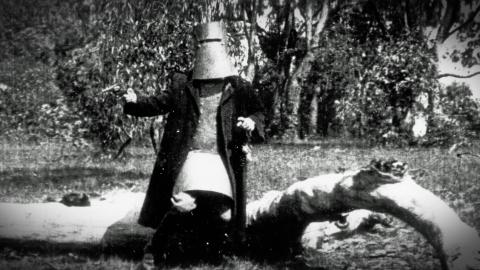Image of Fanny Smith and Horace Watson courtesy Tasmanian Museum and Art Gallery
WARNING: this article contains names, images or voices of deceased Aboriginal and Torres Strait Islander people.
On 9 February 2017, we celebrated the inscription of the 1899 and 1903 Fanny Smith Tasmanian Aboriginal recordings into the UNESCO Australian Memory of the World Register.
These are the only sound recordings of Fanny Smith (1834-1905), the last known fluent speaker of any one of the original Tasmanian Aboriginal languages. Her words and songs provide a unique insight into Tasmanian Aboriginal society, culture and spiritual life.
The Tasmanian Museum and Art Gallery (TMAG) is the custodian of the recordings, and the NFSA has provided specialist preservation and curatorial services.
These invaluable recordings are now in great company. The register contains some of Australia’s greatest cultural treasures, including James Cook’s journal, the Mabo case manuscripts and First World War diaries. The NFSA now has three items on the register, following previous inductees the Cinesound Movietone Australian Newsreel collection and the 1906 film The Story of the Kelly Gang.
The selection process for the register is managed by a committee of specialists who operate under the auspices of the Australian National Commission for UNESCO. Since the program began in 2000, only 57 works have been inscribed onto the register. The Fanny Smith nomination was developed through a collaboration with TMAG. Our work was further shaped through discussions with members of the Tasmanian Aboriginal community and with international experts in the field, including a descendent of Fanny Smith who is currently working as a curator at the British Museum.
Inscription on the register not only highlights the cultural value of the work, it also facilitates discussion and the exchange of information with experts from around the world. This is particularly important in the case of the Fanny Smith recordings, which contextualise a period of catastrophic disruption to Tasmanian Aboriginal society, and provide a greater understanding of the ongoing impact of that period over the subsequent years. Inscription can also facilitate technical discussions which may lead to new preservation methods being applied to ensure the ongoing accessibility of the works.
The Smith cylinders are made from brown wax, which gets very brittle with age. Cracking and breaking is common, and the wax can be so soft that significant damage is possible if they are played more than a few times or if an incorrect stylus is used.




